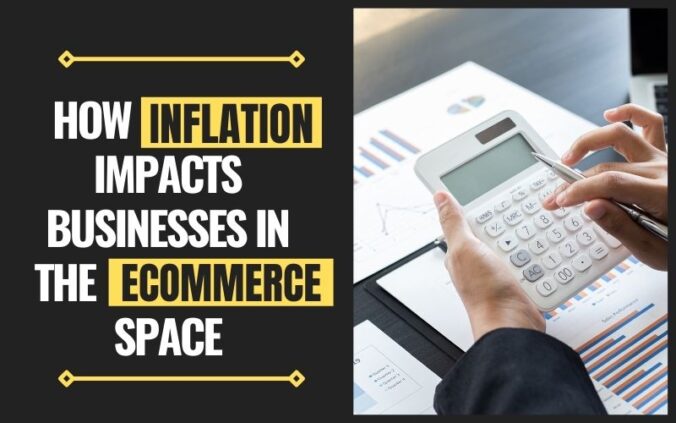At the beginning of 2022, we all realized how crazy inflation is. It hit me hard when I saw the price of my favorite brisket sandwiches increase by $1.50. Everything becomes so much more expensive : our favorite foods, plane tickets, housing, gas, etc. Many of us changed our shopping habits in response to the high inflation rates (I still buy the brisket sandwiches but sadly travel less often). Businesses had to adapt to maintain their profitability but also to keep customers interested. Let’s see how inflation impacts ecommerce and businesses in general.
Introduction
The rising cost of raw materials is hurting the bottom line of many businesses importing or manufacturing their products. Freight and transportation are also getting more expensive, worsening the problem. According to a global pricing index by London-based Drewry Shipping Consultants Ltd, the average price worldwide to ship a forty-foot container has more than quadrupled in a year. The higher cost of living and the shortage of labor contribute to higher labor costs, affecting labor-intensive industries.
Businesses have three options: 1 – not change anything and accept the lower profitability, 2 – increase prices to limit the impact, maintain or increase their profit margins, and 3 – find ways to decrease costs.
The challenge of increasing prices
Increasing prices can be challenging, as customers are becoming more and more price sensitive. According to an IPSOS study, following the record inflation in January 2022, 42% of consumers considered buying more items when on sale, 35% considered buying cheaper products, and 33% planned on buying fewer products. Only 27% of consumers reported not changing their shopping habits. For businesses, this makes the promotional campaigns a lot more strategic and provides an advantage to the low-cost models. The competition becomes tougher if customers buy less and the average value cart decreases.
In the ecommerce space, businesses offering the most economical solution have an additional advantage when customers around the world can shop online and compare prices between different sellers. However, shipping costs also increase with inflation, labor shortages, and higher gas prices. Customers shopping online often expect free shipping, and businesses not charging for shipping will see their margins getting even thinner. It is far easier to apply a fuel surcharge than remove free shipping altogether.
Not only are customers becoming more price-sensitive, but they are also changing their behavior and habits. According to the same IPSOS study, 24% of customers scaled back on gift-giving, 22% started shopping more at dollar stores, and 21% stocked up on items should prices continue to increase. That is especially bad news for businesses offering popular gifts, while it might be an opportunity for dollar stores (if the higher shipping and raw material costs did not kill their margins). The idea that customers are buying in bulk is interesting. Businesses selling consumable products have the opportunity to create bulk offers and offer larger quantities at a discounted price. This can be a way to gain market share by differentiating from the competitors selling smaller quantities.
The alternative of decreasing costs
Businesses willing to maintain their margins without lowering prices must decrease their costs. That is great if they can improve their operations or get better pricing from their suppliers, but many start selling the same product in similar packaging, in slightly smaller quantities. This move is called “shrinkflation” and is what is happening when your favorite pizza stays the same price but is now 13” instead of 14”. Another technique is to replace an expensive product component with something cheaper. For example, reducing the amount of turkey in a sandwich and replacing it with veggies, then conveniently advertising the “new recipe”. Shrinkflation can be a good way for businesses to maintain their profits, but it can also backfire and upset customers. Such as in 2021, when the company McCormick was fined $2.5M for selling less black pepper in the same tins.
Economic conditions, in general, have a large impact on businesses. There are many factors to keep in mind, from exchange rates affecting international trade to unemployment impacting consumers’ disposable income. Some will be problematic and require adjustments, while others can create major opportunities.
https://www.ipsos.com/en-us/knowledge/consumer-shopper/How-Inflation-is-Changing-Consumer-Behavior

